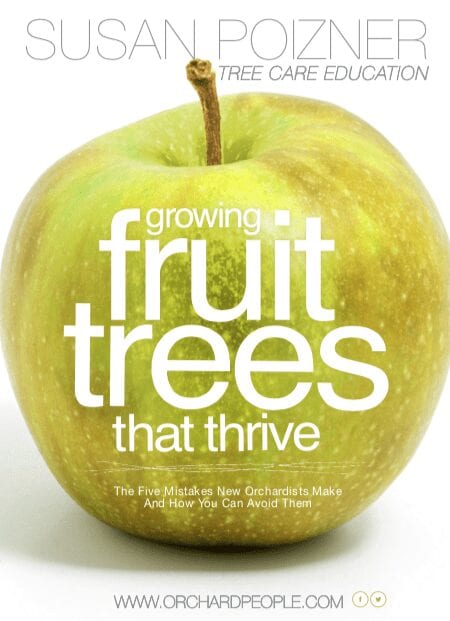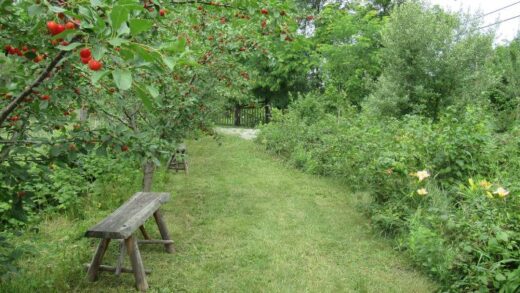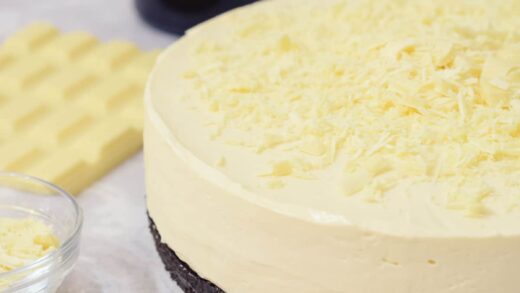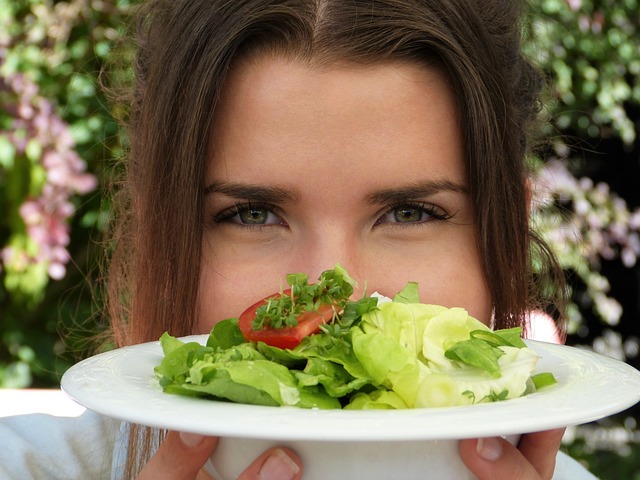
Sandra Krueger lives in Northwest Wisconsin and she wanted to grow an apple tree from seed. So Sandra took a seed from an apple, she planted it in a pot, and she was delighted to see that her tiny seedling tree began to grow. But with the onset of winter, Sandra started to wonder. Would her young seedling tree survive the winter months?
Her instinct was to bring this young potted fruit tree inside where she would care for it as she would any other house plant. But that would be a mistake. Temperate fruit trees, like apple trees, need a period of cold weather in order to thrive. During the cold weather fruit trees experience winter dormancy and go through an essential number of chill hours. The number of necessary chill hours will differ depending on the fruit tree cultivar.
When it comes to fruit trees, winter dormancy is an important time. Dormancy is necessary for fruiting bud development. Those months of dormancy are also important because they allow the tree to rest and conserve energy. It will need that energy in the spring when it will use it to open buds and form branches, shoots and blossoms. Finally, cold weather helps kill overwintering pests in the soil and hidden in the cracks and crevices of your fruit tree.

Fruit Tree Care Newsletter
Sign up for our monthly newsletter and we will send you our eBook “Growing Fruit Trees That Thrive.” You can unsubscribe at any time.
Because of these factors, most potted fruit trees will need to stay outdoors during the winter. And yet, these potted trees are more likely to suffer from winter frost damage than they would be if they were planted in the ground. So, in this article, we will learn how to prepare potted fruit trees for winter. We will cover:
- Hardiness zones and how you overwinter potted fruit trees.
- Why potted fruit trees are more vulnerable to winter frost damage
- How to prepare potted fruit trees for the winter
- Fruit trees that you can keep indoors during the winter
Let’s dig in!
Hardiness zones and how to overwinter potted fruit trees
Here in Ontario, we can grow many types of hardy fruit trees successfully. In our climate, apple, pear, plum, cherry and peach trees can flourish! These trees need anywhere from 800 to 1,000+ chill hours during the winter.
But temperate climates like ours are not appropriate for growing tropical and subtropical fruit trees outdoors. These heat-loving trees would die during our harsh winter months. So here, growers who have avocado or citrus trees in pots would certainly bring them indoors for the winter!
Wherever you live, the only way to know for sure whether your potted fruit tree can survive the winter is by consulting your country’s plant hardiness zone map. In Canada, for instance, where temperatures can drop significantly during winter, many fruit trees are hardy to zones 3 to 7 on the Canadian plant hardiness zone map.
If you live in the US, you can check the USDA plant hardiness zone map. Once you determine what climate zone you are in, check to see if the tree you are growing is hardy enough to survive in that zone. If it is, you will leave your potted fruit tree outside during the winter months.
But wait! That’s not enough to ensure that your potted fruit tree will survive the winter! These potted trees are more vulnerable than trees planted directly in the soil. In the next section we will find out why that is.
Why potted fruit trees are more vulnerable to winter frost damage
In another article I discuss how to prepare your in-ground fruit trees for winter. That’s because all fruit trees, even those planted in the soil, are susceptible to winter damage. But potted fruit trees are even more vulnerable and here’s why:
When a tree is planted in the ground, its root system is insulated by the soil. In contrast, potted fruit tree roots are crammed into small pots with a limited amount of soil around them. And therefore they will not be well insulated during the winter months.
The problem is that trees take in water and nutrients through their root systems. So, if some of those roots freeze and die during the winter, it can disrupt the tree’s ability to take up water and nutrients. Dead roots lead to reduced growth, poor fruit production, and a decline in tree health.
To make matters worse, weak trees become increasingly vulnerable to pest and disease pressures. So, protecting the roots from freezing is crucial to maintain the tree’s health and productivity.
So one of your primary goals in preparing a potted fruit tree for winter will be to find ways to insulate the root system. It can be as simple as wrapping the pot with bubble wrap secured with twine. So let’s explore the main ways we can protect our potted fruit trees from winter damage.

Five tips for overwintering fruit trees in pots outdoors
So, here are five tips for overwintering fruit trees in pots outdoors.
- Insulate the roots with straw, hay, grasses or even bubble wrap: Use the pruned-off tops of dried ornamental grasses, fallen autumn leaves, straw, hay, pine needles, or wood chips to create an insulating layer around the pot to trap air and help regulate soil temperature, safeguarding the root system. Alternatively, use bubble wrap to insulate the pot.
- Protect the tree with rodent fencing: Natural materials like straw and dried grasses can attract rodents! So keep them packed tight up to the pot. Then prevent rodents from burrowing in by circling the pot with makeshift rabbit or rodent fencing made of inexpensive window screening made of a fine mesh that rodents can’t get into! If the fencing is high enough, it can also prevent rabbits and other pests from nibbling on the bark during the winter months.
- Apply mulch to the top of the pot: Mulch is important for in ground trees, but it can also be used for potted fruit trees. Apply 2-3 inches of mulch around the base of the tree to insulate the soil and roots to help maintain a stable soil temperature and prevent rapid freezing and thawing. But make sure that the mulch stays a few inches away from the trunk or stem of the tree as it can collect moisture and rot the trunk.
- Leave the pot in a sheltered part of the garden: Keep your potted fruit tree in a sheltered part of your garden or if necessary, place a windbreak, such as a burlap screen or wooden barrier, on the windward side of the tree to shield it from cold winter winds, which can cause drying and damage.
- Ensure that the soil stays moist (but not soggy) during the winter months: Irrigating fruit trees well before the winter is essential for in ground trees. But this is even more important for potted fruit trees. When plant cells are well hydrated they are less likely to rupture and break during extreme winter temperatures. So keep an eye on your outdoor potted fruit tree and make sure to keep the soil moist throughout the winter to help prevent the desiccation of the roots caused by winter winds and sun.
In the spring, when the weather starts to get warmer, you will remove the insulating straw, grasses or bubble wrap. If you used straw, spread it out in your vegetable garden or around fruiting trees and shrubs that are planted in the ground and as it slowly decomposes, it will release valuable nutrients into the soil. If you have constructed a rodent fence you can leave it up, or store it for reuse the following year.

Potted fruit trees that you can overwinter indoors
While many types of trees are hardy enough to be kept outdoors, other fruit trees need to be taken indoors during the winter, especially tropical and subtropical trees that don’t need chill hours and cannot survive cold weather. You can learn more in our articles on how to grow a lemon tree indoors or watch this video on how to grow fig trees in cold climates.
Overwintering potted fruit trees correctly
Whether you are growing a seedling fruit tree, like Sandra’s, or whether you are growing a potted fruit tree that you purchased from a fruit tree nursery, it’s important to prevent winter damage and that’s easy to do if you follow the tips outlined in this article.
With proper protection, these trees can live and thrive in their pots for years to come and they will also produce a healthy harvest! If that’s what you want, consider learning more about correct annual fruit tree pruning, feeding and pest and disease prevention in our premium online courses at premium online courses at OrchardPeople.com’s. Or pick up a copy of my fruit tree care book Grow Fruit Trees Fast.
Enjoy your fruit trees!

#Preparing #potted #fruit #trees #winter




